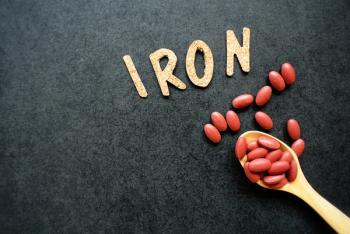
FERTILOSCOPY in the MANAGEMENT OF FEMALE INFERTILITY
Following the first studies carried on by S. Gordts, the technique of Fertiloscopy has been developed, starting in 1997, by A.Watrelot at the "Centre Lyonnais de recherche et d'étude de la stérilité (CRES®)". Fertiloscopy is a new minimally invasive methods for the exploration of the posterior cul-de-sac which allows a complete work out of the mechanical factors of female infertility.
Introduction
Following the first studies carried on by S. Gordts, the technique of Fertiloscopy has been developed, starting in 1997, by A.Watrelot at the "Centre Lyonnais de recherche et d'tude de la strilit (CRES®)". Fertiloscopy is a new minimally invasive methods for the exploration of the posterior cul-de-sac which allows a complete work out of the mechanical factors of female infertility.
When indications are correct, Fertiloscopy can be considered a valid alternative to diagnostic laparoscopy. In fact, it uses the vaginal approach and requires a relatively simple equipment. Moreover, it can be performed under local anaesthesia or under sedation as an ambulatory procedure (in outpatient regime) in hospital environment.
Up till now, Fertiloscopy is mostly a diagnostic procedure with restricted operative possibilities limited to biopsies, minimal adhesiolysis and ovarian drilling, nevertheless operative fertiloscopy is an emerging technique which will probably develop in the next future.
Click Images to enlarge
Equipment
As already stated, a relatively simple equipment is necessary
· Sponge forceps, a little cup for disinfectant, a cup and a 20 cc syringe for the methylene blue, some sponges, 1 liter of sodium chloride.
· A laparoscopic column and a 4.1mm hysteroscope without its sheath or a 2.9mm hysteroscope with its sheath
· One Collin's speculum
· One Pozzi tenaculum
· One methylene blue ampoule
· One Veress needle
· One 4 mm trocar, better if dedicated, and an intrauterine catheter for the tubal patency test.
· A set for the laparoscopic conversion should always be at hand.
Fertiloscopy: a technique for a thorough evaluation of the mechanical factors of female infertility
Fertiloscopy is the combination of different procedures:
· Transvaginal Hydrolaparoscopy
· Dye test
· Salpingoscopy
· Microsalpingoscopy
· Hysteroscopy
1. Transvaginal Hydrolaparoscopy or Hydropelviscopy
Transvaginal Hydrolaparoscopy is the fundamental part of Fertiloscopy.
It is performed injecting transvaginally, through the posterior fornix, about 200 cc of saline to create a hydroperitoneum. This is done by inserting a Veress needle over the midline, 1 cm below the cervix: the saline should flow without hindrance, a sign that the needle is correctly inserted. The needle is then withdrawn and a Douglas transvaginal cannula or an optical trocar, variable in diameter up to 4 mm are introduced in the same axis. Finally, the telescope is introduced into the central channel of the cannula.
The inspection of the pelvic organs is carried out in underwater examination which allows a detailed visualization able to put in evidence the presence of even minimal abnormalities.
2. Tubal Patency Blue Test
The Dye Test is performed injecting concentrated methylene blue into the uterine cavity by means of a dedicated device. It allows the study of the tubal patency.
3.Salpingoscopy
This part of the examination consists of introducing the scope into the tubal ostium to bilateraly explore the tubal mucosa. It is straightforward to carry out, either by entering directly into the fimbriae or by stabilizing the fimbriae with a grasping forceps (diameter 5 French) introduced into the operating channel. During intratubal examination, low-rate irrigation should be continued.
4.Microsalpingoscopy
Microsalpingoscopy is a complementary procedure which has to be routinely performed. Thanks to the optical magnification, the examination the cells of the tubal mucosa after the blue dye test is easy to carry out. Staining of the tubal cell nuclei provides an effective means of assessing the functional capacity of the Fallopian tubes: the more colored are the nuclei, the less functioning is the mucosa.
6. Hysteroscopy
Hysteroscopy is the last part of the procedure. With the same optics, this time introduced into the uterus, it is possible to visualize the uterine cavity and remove abnormalities as polyps, myomas or synechiae or perform biopsies to treat endometrial dysfunctions.
The entire Fertiloscopy takes 10 to15 minutes.
The patient can be dismissed immediately if fertiloscopy has been performed under local anaesthesia or the same day in case of general anaesthesia. The type of anaesthesia is chosen by the patient. Since there is not any vaginal suture, the only recommendation is to avoid using tampons and to abstain from sexual intercourses for five or six days.
Indications to Fertiloscopy
Fertiloscopy can be considered a valid alternative to diagnostic laparoscopy in the work out of infertility. In particular, the main indications are:
· Unexplained infertility (patients with normal hysterosalpingography). Specially indicated are the patients selected for assisted fecundation.
· Suspect for tubal pathology. In this case salpingoscopy will be of utter importance in the therapeutic strategy.
· Before and after tubal surgery.
· In the follow-up of medical treatment of endometriosis.
· Generally, Fertiloscopy can be advocated when laparoscopy is considered difficult or more dangerous. It is the example of obese patients, in which fertiloscopy can be less troublesome or risky than laparoscopy. On the opposite, in presence of evident pathology that needs surgical treatment, a immediate laparoscopy will be performed.
Advantages of Fertiloscopy
Several are the advantages of fertiloscopy both for the patient's compliance and for medical reasons.
· Fertiloscopy is, with limits, an alternative to laparoscopy in the diagnosis of female infertility. It allows to avoid a certain number of diagnostic laparoscopies.
· It is a physiological examination. Fertiloscopy permits a very physiological approach since it is not necessary to mobilize tubes and ovaries to have a thorough examination. The "direct" observation of the ovulation when the exam is performed in that precise menstrual period will permit, in the future, to make progresses in the understanding of ovum tubal pick up.
Moreover, being minimally invasive and substantially harmless, Fertiloscopy is well accepted by the patients and easily counseled in case of necessity. Furthermore, it is easily performed even in obese patients.
· It is a low risk procedure. Although complications are always possible, it has to be emphasized that the fact that this procedure can be performed under local anaesthesia, without requirement of CO 2 insufflation or Trendellenburg position and in absence of risk of injuries to the major vessels makes this technique a low risk investigation in comparison with traditional laparoscopy.
· It is a quick procedure lasting an average of 10 to 15 minutes.
· It is easy to learn.
Fertiloscopy, far from being an alternative to laparoscopy, seems to gain importance in the study of the female infertility allowing an accurate diagnosis and a better selection of therapeutic alternatives.
The concomitant development of surgical capabilities will help to cut down the number of laparoscopies performed for minimal lesions as mild endometriosis.
Limits and Contraindications to Fertiloscopy
Contraindications:
All the contraindications to fertiloscopy must be avoided.
In particular, the following situations advice against the procedure:
· Evident pelvic pathology: in this case, laparoscopy is required due to its operative possibilities.
· Pelvis masses occupying the pouch of Douglas: posterior myomas, ovarian cysts or fixed uterine retroflexion.
· Cul-de-sac obliteration as in deep infiltrating endometriosis or recto-vaginal septum endometriosis.
Pelvic and ultrasound examination will be helpful in the diagnosis of these situations.
Limits:
· Impossible visualization of the anterior aspect of the uterus and utero-vesical fold. In practice, the chance that this areas will be localization of isolate endometriotic lesions in absence of other implants of endometriosis is very low (less than 1% of cases)
· Low operative capacity. Even if it possible to perform sharp or blunt adhesiolysis, biopsies or ovarian drilling, at the moment fertiloscopy has to be considered a diagnostic procedure.
Click Images to enlarge
References:
Related Articles
1. Benifla JL, Madelenat P, Merviel P. DEBAT - Controverse: doit on faire une coelioscopie systématique dans le cadre du bilan de l'infertilité? Gynecol Obstét Fertil 2001; 29:160-170.
2. Brosens I, Gordts S, Campo R. Transvaginal hydrolaparoscopy but no standard laparoscopy reveals subtle endometriotic adhesions of the ovary. Fertil Steril 2001 ; 75: 1009-1012. (
3. Darai E, Desolale L, Lecuru F and Soriano D. Transvaginal hydrolaparoscopy compared with laparoscopy for the evaluation of infertile women. A prospective comparative study. Hum Reprod 2000 ;15 :2379-2382. (
4. Donnez J, Nisolle M. The Encyclopedia of Visual Medicine Series. An Atlas of Operative Laparoscopy and Hysteroscopy: Fertiloscopy. The Parthenon Publishing Group, ©2001 ; 13: 121-136.
5. Fernandez H, Alby JD, Gervaise A, et al. Operative transvaginal hydrolaparoscopy for treatment of polycystic ovary syndrome : a new minimally invasive surgery. Fertil Steril 2001; 75:607-611. (
6. Gordts S, Campo R, Rombauts L, Brosens I. Transvaginal hydrolaparoscopy as an outpatient procedure for infertility investigation. Hum.Reprod 1998;13:99-103. (
7. Mintz M. Actualisation de la culdoscopie transvaginale en decubitus dorsal. Un nouvel endoscope à vision directe muni d'une aiguille à ponction incorporée dans l'axe. Contracept Fertil Sex 1987, 15 :401-404.
8. Racinet C, Watrelot A. Fertiloscopy versus laparoscopy: results of a prospective international multicentric study. Communication at the 20th Congress of the SFEG ( Société française d'endoscopie gynécologique ) Grenoble 23-6-2001.
9. Watrelot A, Gordts S, Andine JP, Brosens I. Une nouvelle approche diagnostique : La Fertiloscopie. Endomag 1997 ;21 :7-8 .
10. Watrelot A, Dreyfus JM, Andine JP. Evaluation of the performance of fertiloscopy in 160 consecutive infertile patients with no obvious pathology. Human Reprod 1999;14: 707-711. (
11. Watrelot A. "Manual of fertiloscopy - a step-by-step guideline". ©2001, Endopress, Germany, pp 1-34.
Web Sites
Newsletter
Get the latest clinical updates, case studies, and expert commentary in obstetric and gynecologic care. Sign up now to stay informed.









